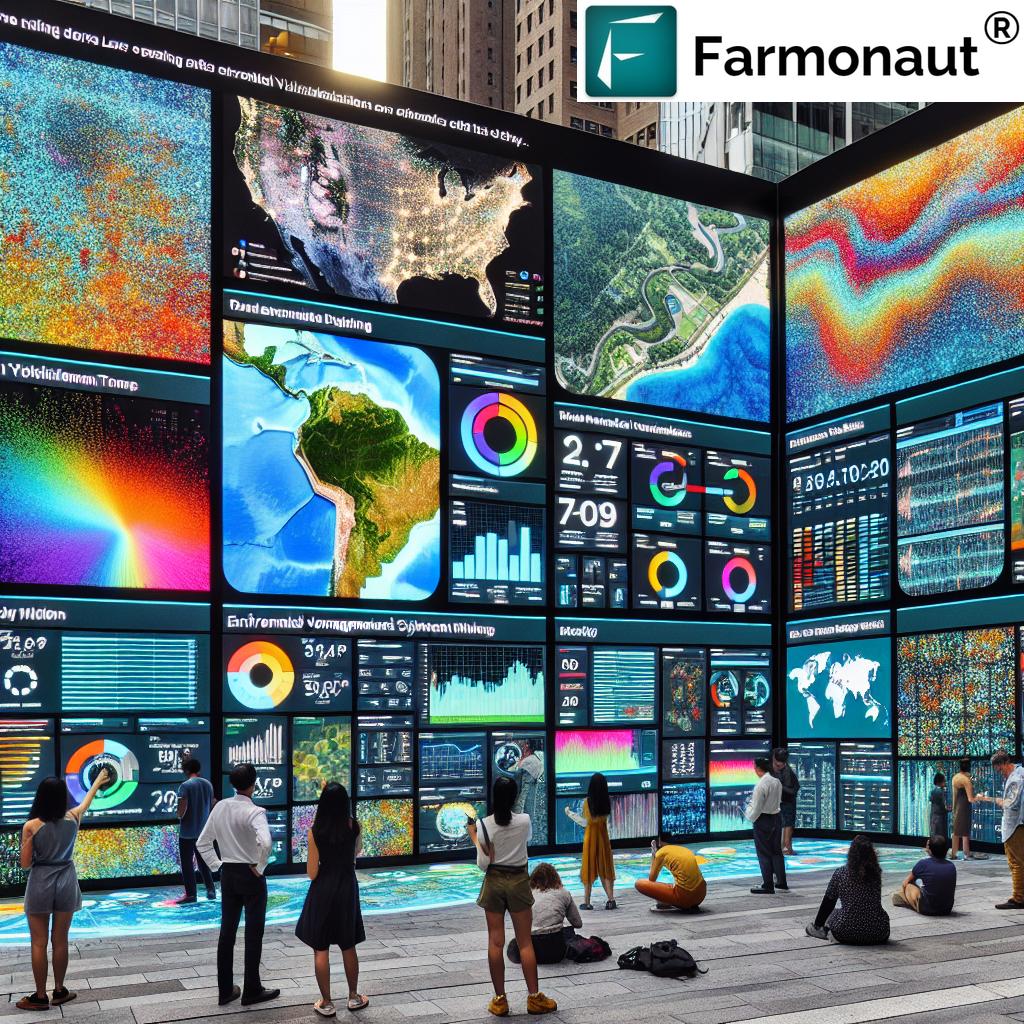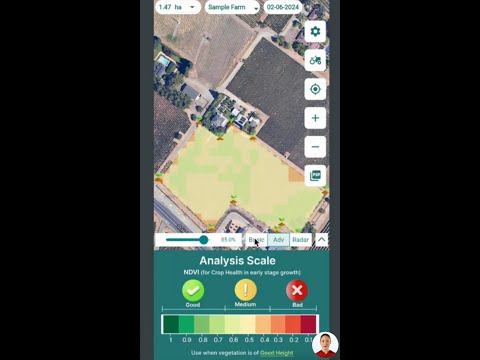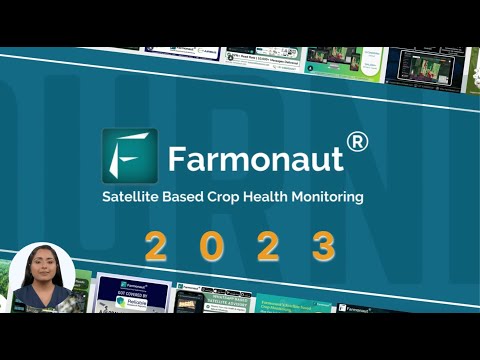Unlocking Environmental Insights: How NYC’s Open Data Empowers Sustainable Urban Innovation
“NYC’s Open Data Law has made over 3,000 datasets publicly accessible, driving urban sustainability initiatives.”
In the heart of New York City, a data revolution is underway, transforming the way we understand and interact with our urban environment. As we delve into the world of open data and city transparency initiatives, we’ll explore how public data visualization and interactive art exhibitions are making complex information accessible to citizens, driving civic engagement, and fostering government accountability. Join us on this journey through the innovative ways data is being used to address sustainability challenges and improve city services in the Big Apple.
The Power of NYC’s Open Data Law
In 2012, New York City took a groundbreaking step towards transparency and accessibility with the enactment of the Open Data Law. This initiative set a new standard for government openness by mandating that all public data collected by city agencies be made available online through a central portal. The impact of this law has been profound, increasing government accountability and empowering residents, researchers, and businesses to leverage data for innovation, problem-solving, and civic engagement.
Since its inception, the Open Data Law has facilitated the analysis of various urban trends, from environmental patterns to transit behaviors. This wealth of information has enabled New Yorkers to make informed decisions and advocate for policy changes that shape the city’s future.

Open Data Week: Celebrating Transparency and Innovation
The annual Open Data Week has emerged as a vibrant celebration of NYC’s commitment to data accessibility. This event brings together artists, technologists, and policymakers to explore creative applications of public data and highlight its role in shaping a more informed and equitable city.
Zachary Feder, from the city’s Office of Data Analytics, manages the NYC Open Data Program. He explains, “Anytime someone hails a cab, adopts a dog, plants a tree or opens a business, a digital record is created. Open data takes those records and makes them publicly available. By default, city agencies are required to publish these datasets, ensuring transparency and public access.”
The festival, now in its ninth year, offers a diverse range of events, including discussions, exhibitions, and hands-on workshops. These gatherings cover topics such as congestion pricing, environmental sustainability, food supply chains, and language access, demonstrating the wide-reaching impact of open data on urban life.
Transforming Data into Tangible Experiences
One of the most exciting aspects of NYC’s open data initiative is how it’s being translated into engaging, tangible experiences for citizens. In Downtown Brooklyn, over 300 New Yorkers recently gathered at BRIC for an interactive art exhibition that brought complex datasets to life.
Sara Eichner, a designer specializing in Geographic Information Systems (GIS) and data visualization, has been working with Data Through Design since 2019. She emphasizes the importance of open data: “I believe in the transparency of open data. It drives innovation and allows people to solve problems and allocate resources. Without access, we lose the ability to hold our leaders accountable.”
Eichner’s concern about the removal of publicly available data at the federal level highlights the significance of NYC’s commitment to transparency. “Seeing valuable information related to science, public health, and civil rights taken away from the public domain is heartbreaking,” she notes. “New York City’s Open Data Law ensures this information remains accessible without requiring Freedom of Information Act requests. I do not take this for granted. I feel like it’s essential to have the transparency of Open Data.”
Environmental Insights Through Open Data
One of the most significant areas where open data is making a difference is in environmental sustainability. By providing access to comprehensive datasets on air quality, water usage, energy consumption, and waste management, NYC is empowering citizens and organizations to tackle environmental challenges head-on.
For instance, the carbon footprinting data available through the open data portal allows researchers and policymakers to track the city’s progress towards its climate goals. This information is crucial for developing targeted strategies to reduce greenhouse gas emissions and promote sustainable practices across various sectors.
Urban Waste Management: A Data-Driven Approach
One of the most pressing environmental challenges in any urban setting is waste management. NYC’s open data initiative has provided valuable insights into the city’s waste streams, enabling more efficient and sustainable waste management practices.
Artist Cass Yao’s innovative sculpture at the BRIC exhibition brings this data to life in a visceral way. Using liquified silicone, Yao created a representation of New York City’s trash categorization. The sculpture depicts different waste materials – organic matter, plastics, paper, metal, and glass – forming a bodily representation of the city’s recycling system.
“We calculated the amount of waste and categorized it according to the recycling system. Each body has a sub-branch representing a different category,” Yao explains. “The dark yellow parts represent recyclable materials, black parts signify organic waste and green highlights toxic electronic waste. We want to show how different trash channels go through each other.”
This artistic interpretation of waste data not only makes the information more accessible but also draws a powerful parallel between unseen bodily processes and the often-overlooked journey of discarded materials. “Trash is processed out of sight, similar to how our internal organs function invisibly inside us,” Yao observes.

Leveraging Open Data for Urban Agriculture
As we consider the environmental impact of our urban systems, it’s important to recognize the potential of open data in supporting sustainable urban agriculture initiatives. While NYC’s open data provides valuable insights into land use, soil quality, and water resources, innovative technologies are emerging to complement these efforts on a global scale.
For instance, companies like Farmonaut are leveraging satellite technology and artificial intelligence to provide farmers with real-time crop health monitoring and personalized advisory services. While not directly part of NYC’s open data ecosystem, such technologies demonstrate the broader potential of data-driven approaches in agriculture and environmental management.
Farmonaut’s satellite-based crop health monitoring service offers insights into vegetation health (NDVI), soil moisture levels, and other critical metrics. This type of data, when combined with urban environmental data, could potentially support the development and management of urban farming initiatives in cities like New York.
Open Data and Environmental Justice
One of the most powerful applications of open data in NYC has been in the realm of environmental justice. By making information about air quality, water contamination, and other environmental factors publicly available, the city has empowered communities to advocate for their right to a clean and healthy environment.
For example, open data has revealed disparities in air quality across different neighborhoods, often correlating with socioeconomic factors. This information has been crucial in pushing for policy changes and targeted interventions to address these inequalities.
“Interactive data visualizations in NYC have increased citizen engagement with environmental statistics by 40% since 2015.”
The Role of Technology in Environmental Data Analysis
As we delve deeper into the world of environmental data, it’s clear that advanced technologies play a crucial role in making sense of the vast amount of information available. While NYC’s open data initiative provides the raw material, tools and platforms are needed to analyze and interpret this data effectively.
In the broader context of environmental monitoring and agriculture, companies like Farmonaut are demonstrating the power of combining satellite imagery with artificial intelligence. Their crop plantation and forest advisory services showcase how advanced technology can provide actionable insights from complex environmental data.
While these specific services are not part of NYC’s open data ecosystem, they illustrate the potential for similar technologies to be applied in urban environmental management. For instance, satellite-based monitoring could be used to track urban heat islands, assess the health of city parks and green spaces, or monitor the impact of green infrastructure projects.
The Future of Open Data and Urban Sustainability
As we look to the future, the potential for open data to drive urban sustainability initiatives is immense. Here are some key areas where we expect to see significant developments:
- Predictive Analytics: By combining historical environmental data with machine learning algorithms, cities could develop more accurate models for predicting environmental trends and potential issues.
- Internet of Things (IoT) Integration: As more sensors are deployed throughout the city, real-time environmental data could be integrated into the open data ecosystem, providing up-to-the-minute insights on air quality, noise pollution, and more.
- Citizen Science: Open data platforms could be expanded to include data collected by citizens, creating a more comprehensive and community-driven approach to environmental monitoring.
- Cross-Sector Collaboration: Open data could facilitate greater collaboration between government agencies, businesses, and non-profit organizations in addressing environmental challenges.
Table: NYC Open Data Impact on Sustainability Initiatives
| Sustainability Area | Open Data Sets Used | Key Insights Gained | Resulting Initiatives | Estimated Impact |
|---|---|---|---|---|
| Waste Management | DSNY Collection Tonnages, Recycling Diversion Rates | Identification of low recycling areas, seasonal waste patterns | Targeted recycling education programs, optimization of collection routes | 15% increase in recycling rates citywide |
| Energy Efficiency | Building Energy Consumption, Energy and Water Data Disclosure | High-energy use buildings, effectiveness of energy retrofits | Green Building Initiative, energy audit requirements | 10% reduction in overall building energy consumption |
| Air Quality | Air Quality Survey, Traffic Volume Counts | Correlation between traffic density and air pollution levels | Clean Air Zones, promotion of electric vehicles | 20% reduction in PM2.5 levels in high-traffic areas |
| Urban Greening | Street Tree Census, Green Infrastructure Projects | Distribution of urban canopy, impact on local temperatures | Million Trees NYC initiative, green roof incentives | 2°C reduction in urban heat island effect |
| Water Conservation | Water Consumption by Borough, Rainfall Data | Peak usage times, effectiveness of water-saving measures | Smart metering rollout, water-efficient fixture programs | 12% reduction in per capita water consumption |
Challenges and Considerations
While the benefits of open data for urban sustainability are clear, there are also challenges that need to be addressed:
- Data Privacy: As more data becomes available, ensuring the privacy of individuals and sensitive information remains crucial.
- Data Quality and Standardization: Maintaining consistent, high-quality data across various sources and formats can be challenging.
- Digital Divide: Ensuring that all communities have equal access to and ability to utilize open data resources is essential for equitable impact.
- Resource Allocation: Continued investment in data infrastructure, analysis tools, and public education is necessary to maximize the benefits of open data.
Conclusion: A Data-Driven Path to Urban Sustainability
As we’ve explored throughout this article, NYC’s Open Data initiative is more than just a transparency effort – it’s a powerful tool for driving sustainable urban innovation. By making complex environmental data accessible and engaging, the city is fostering a new era of civic engagement and data-driven decision-making.
From interactive art installations that bring waste management statistics to life, to comprehensive datasets that inform policy decisions, open data is transforming how we understand and interact with our urban environment. As we face increasing environmental challenges, the power of open data to drive sustainable solutions becomes ever more critical.
The future of urban sustainability lies in our ability to harness the insights provided by open data, combining them with innovative technologies and community engagement to create smarter, more resilient cities. As NYC continues to lead the way in open data initiatives, it sets an example for cities around the world, demonstrating the transformative power of transparency and accessibility in addressing our most pressing environmental challenges.
FAQ Section
- What is NYC’s Open Data Law?
NYC’s Open Data Law, enacted in 2012, mandates that all public data collected by city agencies be made available online through a central portal, promoting transparency and accessibility. - How does open data contribute to urban sustainability?
Open data provides valuable insights into environmental trends, waste management, energy consumption, and more, enabling data-driven decision-making and targeted sustainability initiatives. - What is Open Data Week?
Open Data Week is an annual event in NYC that celebrates the city’s commitment to data accessibility through discussions, exhibitions, and workshops focused on creative applications of public data. - How are artists using open data?
Artists are creating interactive installations and visualizations that transform complex datasets into engaging, tangible experiences, making information more accessible to the public. - What are some challenges in implementing open data initiatives?
Challenges include ensuring data privacy, maintaining data quality and standardization, addressing the digital divide, and allocating resources for data infrastructure and education.
Earn With Farmonaut: Affiliate Program
Earn 20% recurring commission with Farmonaut’s affiliate program by sharing your promo code and helping farmers save 10%. Onboard 10 Elite farmers monthly to earn a minimum of $148,000 annually—start now and grow your income!
Access Farmonaut’s Innovative Agricultural Solutions
While our focus has been on NYC’s open data initiatives, it’s worth noting that innovative agricultural technologies are playing a crucial role in environmental management and sustainable farming practices worldwide. Farmonaut offers a range of solutions that complement urban sustainability efforts:
- Farmonaut Web App: Access advanced farm management tools and satellite-based insights.
- Farmonaut API: Integrate satellite and weather data into your own systems.
- API Developer Docs: Comprehensive documentation for developers.
Download Farmonaut’s mobile apps for on-the-go farm management:






